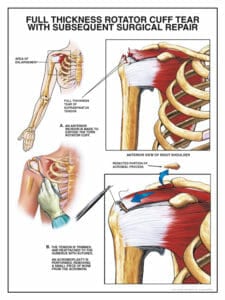
What’s the secret to shoulder bursitis pain relief?
If you have had shoulder pain for quite some time you need to get a diagnosis, one of the most common causes of shoulder pain is bursitis. So what’s the secret to shoulder bursitis pain relief? Continue reading to find out.
In this article, we will discuss what shoulder bursitis is, the causes of shoulder bursitis, and treatment for shoulder bursitis relief and we will look at how to get shoulder bursitis relief using enzyme therapy.
Enzymes have been used for hundreds of years as a natural alternative to drugs, enzymes tend to be more effective over the long term and generally don’t produce many side effects, unlike anti-inflammatory drugs.
The Shoulder
The shoulder is made up of several joints that integrate with tendons and muscles to facilitate a widespread movement of the arm- from lifting a cup of tea to digging the garden.
We use our shoulders a lot and this perpetual motion can lead to cumulative issues around instability and inflammation in the soft tissue leading to pain.
The pain may occur when you move your shoulder some or all the time. it may be temporary and go away after a little while or it may be long-lasting and need medical diagnosis and treatment.
We will examine the most common cause and treatments for shoulder pain that involve muscles, ligaments, tendons, and joints.

What are the reasons for shoulder pain?
In most cases the pain involves what is known as the soft tissues-muscles, tendons, and ligaments, the pain is not associated with the bones. There are three main categories:
- Tendonitis / Bursitis
- An injury
- Arthritis
In exceptional cases of shoulder pain infection, nerve problems, tumors, or infections may be the cause.
Tendonitis/Bursitis
A tendon is a bond that joins the muscle to the bone or tissue, tendonitis occurs because of wear and tear over years. There are several types of general tendonitis
- Acute tendonitis happens when we overuse the shoulder joint by throwing a ball many times or in a work-related activity, this type of activity causes splitting and tearing of the tendons.
- The rotator cuff provides the shoulder with stability and motion, the biceps tendon is located between the rotator cuff tendons and the shoulder, over time this area may be caught up in the wear and tear activity, a rotator cuff injury is one of the most common disorders of acute tendonitis
- Chronic tendonitis causes repeated wear and tear on the shoulder due to aging or a degenerative disease.
Shoulder bursitis

In some cases, overuse of the shoulder results in the bursa becoming inflamed and swollen, this condition is shoulder bursitis.
The bursa or bursas are tiny sacs filled with fluid that are located around the joints the function of the bursa is to minimize the friction that occurs when the shoulder moves.
Shoulder bursitis often happens in conjunction with rotator cuff tendonitis. The lining of the socket can also become inflamed affecting the shoulder, it can be painful, this condition is connected to continuing loss of shoulder motion known as a “Frozen Shoulder”
Frozen shoulder care
With the correct care a frozen shoulder can fix itself, treatments include:
- Drugs (non-steroidal anti-inflammatory) such as aspirin or ibuprofen will reduce the swelling and pain
- Cortisone (steroid injection) is injected straight into the joint of the shoulder and usually works well.
- Physical therapy, a physical therapist will give a set of specific motion exercises to be done at home, at times heat will be used to loosen up the shoulder before the stretching exercises.
- Sterile fluid (hydro dilatation) is gently injected into the shoulder joint to enlarge and stretch the joint capsule.
Injury
Sometimes through an injury the bone in the shoulder joint is knocked out of its normal position or the bone in one of the shoulder joints will move out of position causing instability, this can lead to a dislocated joint in the shoulder.
Recurrent dislocation either partly dislocated or completely dislocated will cause pain and make you unsteady if you lift your arms or try to move the arm away from the body.
This is sometimes called a “dead arm” as you try to lift your arm you get a feeling that the arm is uncomfortable or it is slipping out of place.
Shoulder pain-Arthritis
Arthritis can cause shoulder pain and there are many types of arthritis: pain can also result from arthritis, in this case, the cause is wear and tear on the joint leading to pain and swelling.
Arthritis in the shoulder can be caused by sports or work injuries, you find that people will try to avoid using the shoulder to avoid the pain and this can lead to the soft tissue part of the shoulder joint becoming stiff resulting in pain or restricted movement.
When should you see a doctor ?
People, especially men will try to brush off negligible shoulder pain and hope that it goes away. If the injury is acute and persistent with more severe pain, or a tearing sensation followed by a weakness it is advisable to seek medical and orthopedic opinion.
If you have chronic pain or pain at night you should seek medical help for a diagnosis without delay.
Medical diagnosis
The orthopedic surgeon will look for the source of the shoulder pain so that the correct treatment can be prescribed, a thorough examination will be carried out including looking for swelling, muscle weakness, or deformity, and the affected arm will be lifted to determine what kind of motion you have, the surgeon will ask certain questions such as:
1. When did you notice the pain?
2. Has it happened before?
3. What treatment did you receive?
4. Your general health
X-Ray
You may need an X-ray so that the surgeon can have a more detailed look at the bones and the joints around the shoulder, you may need to have an ultrasound completed to look for tears in the shoulder tendons.
Computerized tomography (CT scan) gives a more detailed picture of the shoulder. If the surgeon needs to look for nerve damage he will ask for an EMG study (electromyogram) to be done.
In some cases, an Arthrogram (an x-ray study) will be completed where they inject dye into the shoulder area, so they have a better quality view of the shoulder joint and surrounding tendons and muscles.
Bone scan
A bone scan involves a low radiation dose of radioactive isotope injected into the shoulder followed by a scan of the shoulder.
MRI
Magnetic Resonance Imaging or an MRI is additional and is a valuable diagnostic tool used by orthopedic
surgeons. The MRI offers an image of the soft tissues surrounding the joint without any radiation.
Arthroscopy
This is a procedure whereby the surgeon uses a lighted telescope during a surgical procedure to look inside the shoulder joint. This procedure may show injury to the soft tissue that wouldn’t be seen during the physical examination, during other tests, or x-rays.
Shoulder bursitis treatments
Generally, treatments for shoulder bursitis will involve physical therapy and rest, the physical therapy is designed to build up the shoulder muscle again, if the swelling and pain are an issue medication for inflammation and pain will be used.
In severe cases of chronic shoulder bursitis, a drug injection may be used to treat the pain. Rotator cuff tears and recurring dislocation may require surgery.
People who have long-term shoulder bursitis or frozen shoulder syndrome have had good shoulder bursitis relief results using enzyme therapy, one of our Serrapeptase customers said “
One chronic pain sufferer describes their Serrapeptase use for a frozen shoulder:
“Last night was the first pain-free continuous sleep I have had in 4 weeks. I will continue with the Serrapeptase therapy (3X3 per day) for now.”
Related Articles
Shoulder Bursitis Pain Relief That Will Help
Bursitis hip relief what you can do for the pain

